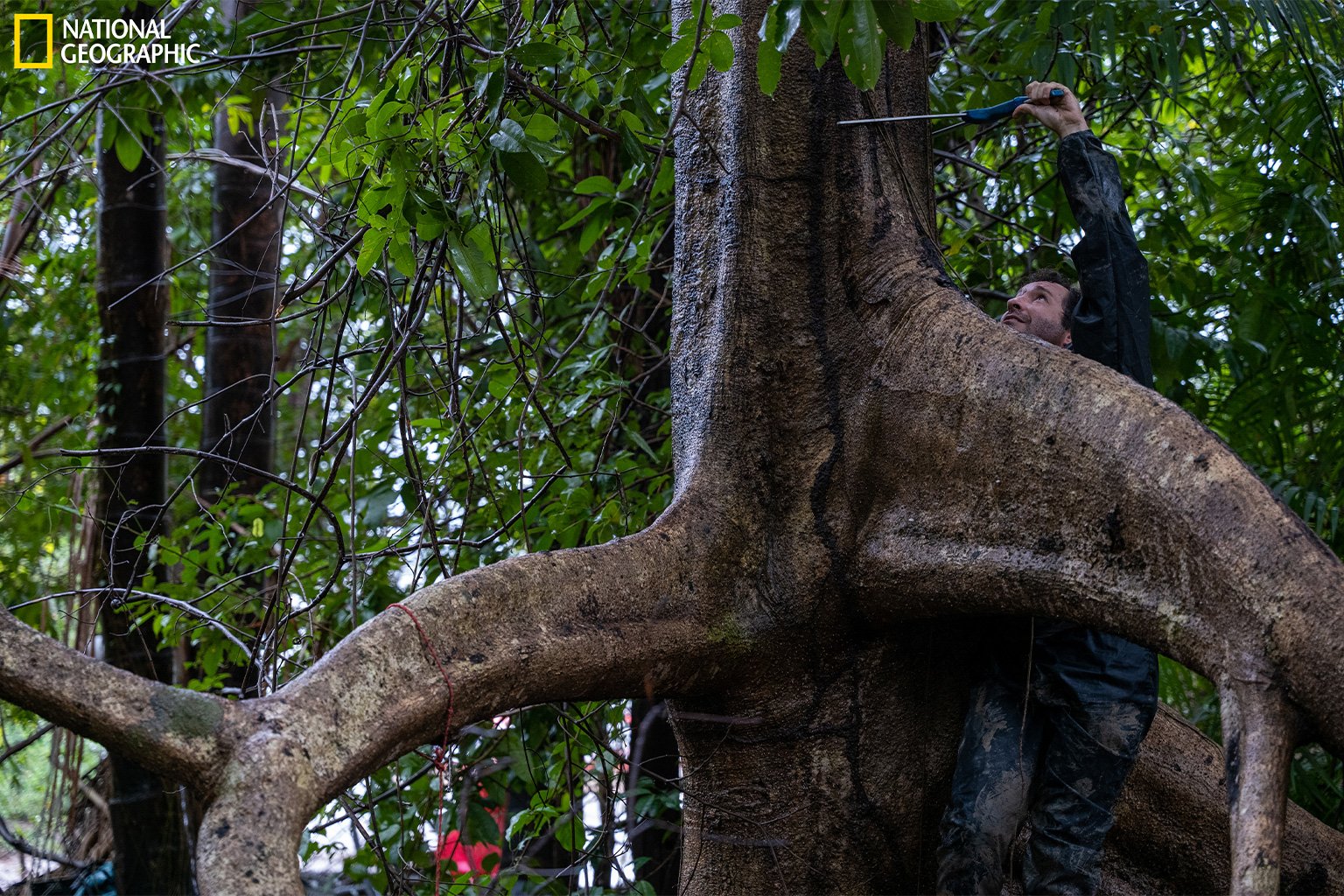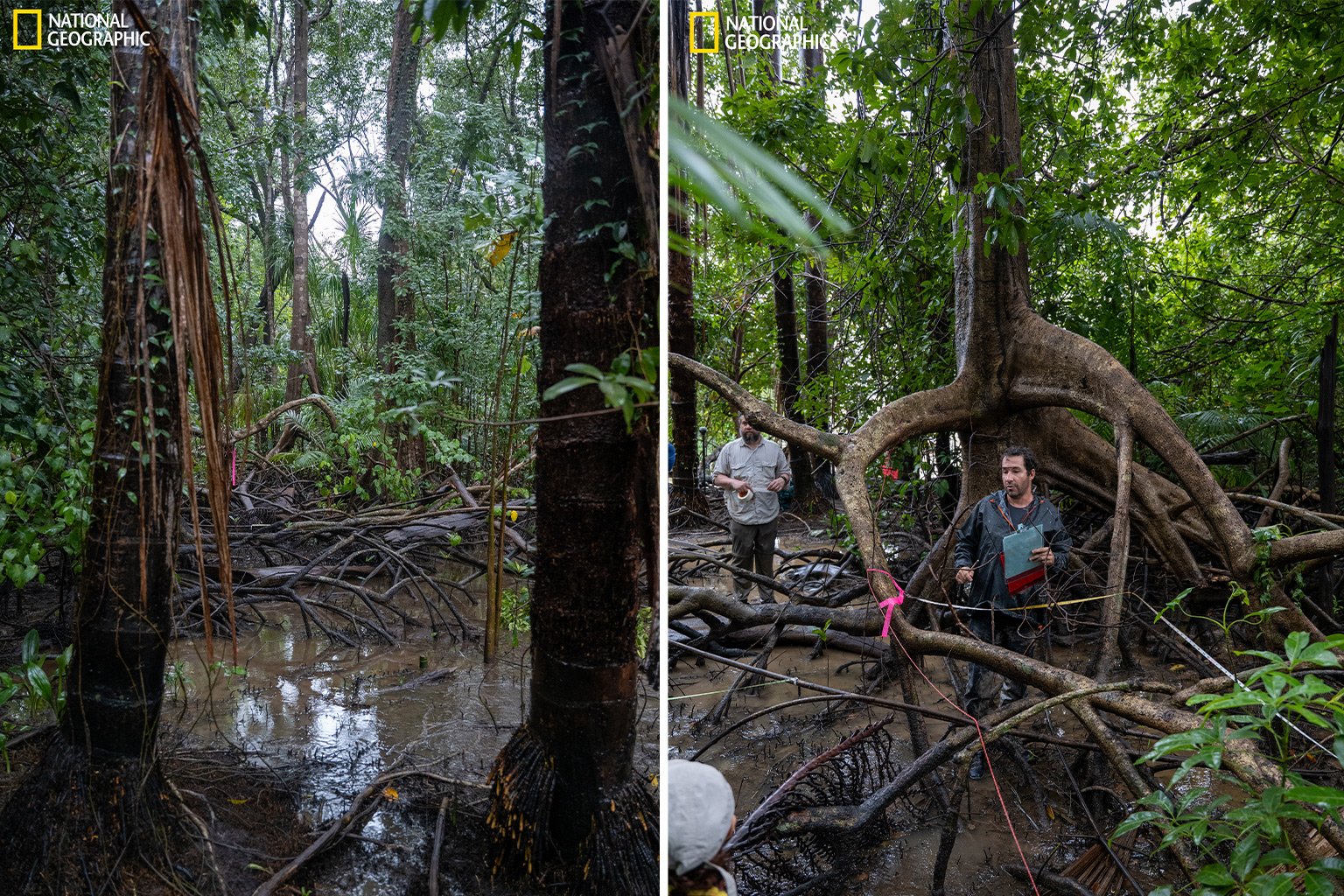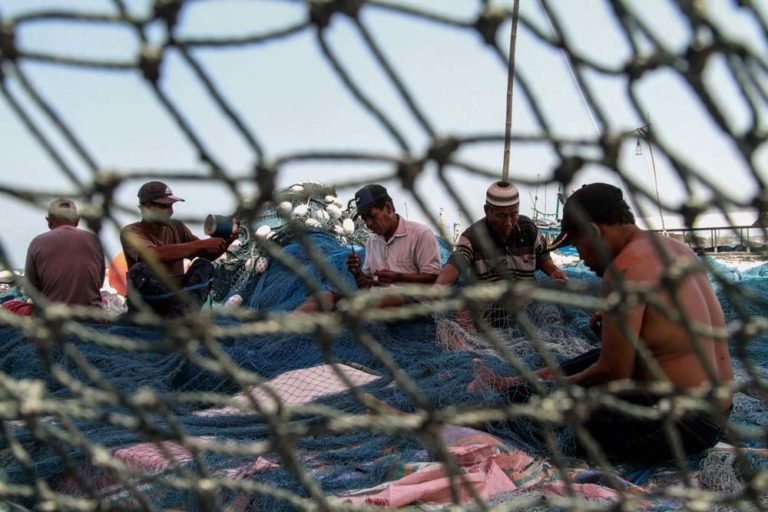- Researchers on an expedition in the Amazon River Delta have found mangroves growing in freshwater — a phenomenon never before documented in deltas or coastal mangroves anywhere else in the world.
- The mangroves, overlooked by previous satellite mapping efforts, increase the known area of mangroves in the region by 20%, or an additional 180 square kilometers (70 square miles).
- Mangroves are a more effective carbon sink than other types of tropical forest, with more than 8% of all carbon stocks worldwide held in Brazil’s mangroves.
- Despite their many ecosystem services, mangroves are not well protected or funded in Brazil.
On an expedition in the Amazon River Delta, researchers found mangroves growing in water with little to no salinity and overlapping with freshwater forested wetlands — a phenomenon never before documented in deltas or coastal mangroves anywhere else in the world.
Mangroves are hardy trees and shrubs that have adapted to live primarily in saltwater in the changing intertidal zones along marine coasts. National Geographic explorers Angelo Bernardino and Thiago Silva found these unique freshwater mangroves in April 2022 during a two-week expedition that was part of the larger, two-year National Geographic and Rolex Perpetual Planet Amazon Expedition.
The mangroves had been overlooked by previous satellite mapping efforts. Their identification increases the known area of mangroves in the region by 20%, or an additional 180 square kilometers (70 square miles). The findings were published July 20 in the journal Current Biology.
“It was phenomenal to see this type of freshwater flooded forests in this environment,” Bernardino, a marine ecologist, said in a press release. “This discovery is critical to further understanding the intricacies of mangrove forests and how they are crucial to local communities that surround them.”
This area of unique freshwater mangroves was found in the Amazon Delta, the region where the world’s largest river meets the ocean. Here, the plume of water spilling out from the river’s mouth, combined with the area’s high rainfall, releases an enormous volume of freshwater northwest along the coast of Brazil. Scientists say the freshwater mangroves growing here are strong evidence of the ecosystem’s adaptability to the Amazon River’s flow.
“Discovering a large area of mixed mangrove and freshwater forest trees along the upper estuarine reaches of the Amazon Basin is significant given that most tidal wetland overlap is restricted in area,” Ken Krauss, a research ecologist with the U.S. Geological Survey, who was not involved in the study, told Mongabay.

Bernadino and Silva explored 11 mangrove forests in the area, measuring soil pore water, salinity, plant composition, and tree density and volume. They used 3D laser scanning from drones and the ground, allowing them to “develop new methods to estimate carbon stocks, follow where the individual trees are, and even see underground channels of vegetation,” said Silva, a co-author of the study. “It’s fascinating.”
Although these particular mangroves are unique, they likely still provide many of the critical ecosystem services that the more typical saltwater mangroves provide, such as capturing carbon, safeguarding the coasts from erosion, serving as a nursery of many fish and aquatic species, and as essential habitat for a host of plants and animals.
“This newly discovered habitat type may even be home to endemic animals and plants yet to be discovered and provides tropical floodplain and estuarine ecologists something new to look for during future field expeditions,” Krauss said.
According to the study, scientists “predict that these forests may hold among the largest global carbon stocks of coastal oceans,” due to the mix of mature trees growing in abundant, nutrient-rich freshwater from the Amazon River.
Mangroves are a more effective carbon sink than other types of tropical forests, with a recent study revealing that more than 8% of all carbon stocks worldwide are held in Brazil’s mangroves.
However, despite their immense services, mangroves aren’t included in protected areas in Brazil or seen as a conservation priority in emission reduction commitments to the Paris Agreement. Similarly, the transition zone between dry land and mangroves, known as apicum, isn’t protected under Brazilian law.
“One hectare of mangrove has much more carbon than the same area in the Amazon rainforest,” Pablo Riul, a biology professor at the Federal University of Paraíba (UFPB), said in a March 2022 interview with Mongabay. “But it is neglected. And it always has been. People see it as a dirty place, with a lot of garbage and sewage, because it has historically served as a sewage disposal site for many coastal cities.”

Mangroves are threatened by shrimp farming, pollution from agricultural runoff, erosion, development, and climate change. In 2020, Brazil’s environment minister, Ricardo Salles, tried to end two resolutions that protected mangroves but the Supreme Federal Court declared the measure unconstitutional. Researchers also say mangrove research and conservation aren’t well funded.
“The expedition into the Brazilian mangrove forest and subsequent discovery of freshwater mangroves is critical to painting the full picture of the vast Amazon River Basin,” Nicole Alexiev, vice president of science and innovation at the National Geographic Society, said in a press statement.
The next phase of research is ongoing in Brazil’s Pará state, where Bernardino and fellow National Geographic explorer Margaret Owuor are taking surveys to document the economic and social value of mangrove forest communities in the Amazon.
Alexiev said she hopes these expeditions will “gather new information about these critical ecosystems and how we can support solutions to ensure their protection.”
Banner image: Franco Ivan Macedo Tafur, a member of the Amazon mangrove research team, observes the thick, aerial roots of the Amazon mangroves. Image courtesy of Corey Robinson/National Geographic.
Citation:
Bernardino, A. F., Mazzuco, A. C., Souza, F. M., Santos, T. M., Sanders, C. J., Massone, C. G., … Kauffman, J. B. (2022). The novel mangrove environment and composition of the Amazon delta. Current Biology. doi:10.1016/j.cub.2022.06.071
Rovai, A. S., Twilley, R. R., Worthington, T. A., & Riul, P. (2022). Brazilian mangroves: Blue carbon hotspots of national and global relevance to natural climate solutions. Frontiers in Forests and Global Change, 4. doi:10.3389/ffgc.2021.787533
Liz Kimbrough is a staff writer for Mongabay. Find her on Twitter @lizkimbrough_
FEEDBACK: Use this form to send a message to the author of this post. If you want to post a public comment, you can do that at the bottom of the page.











